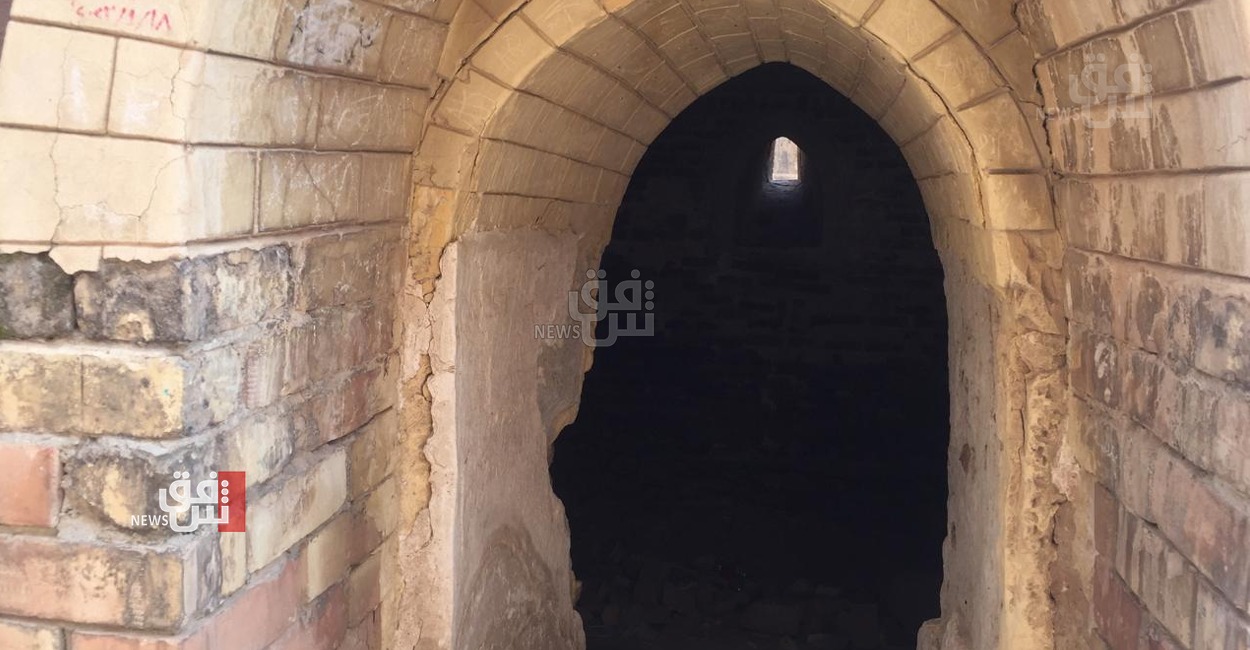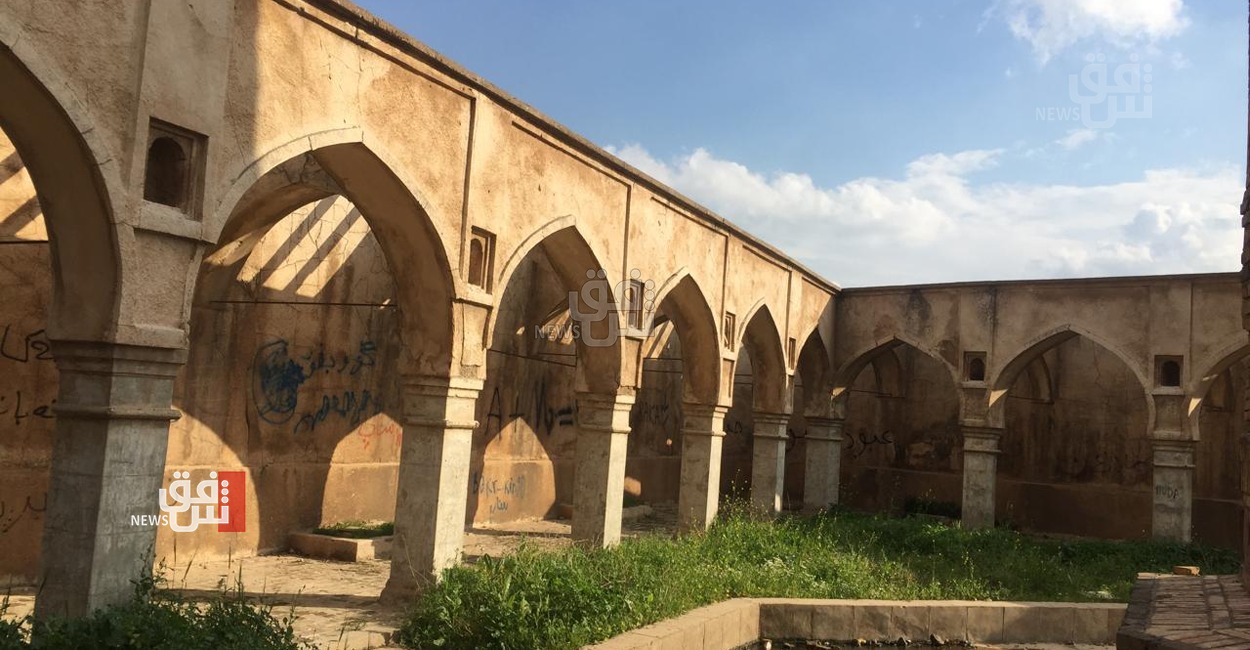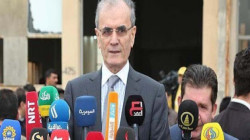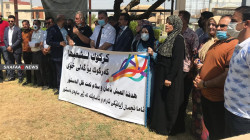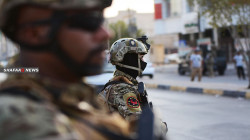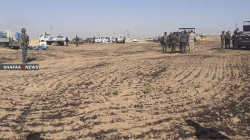Kirkuk's Archaeological Citadel: Neglect awaiting government funding

Shafaq News/ The Kirkuk Citadel, a symbol of Kirkuk City's historical and cultural identity, is a testament to the civilizations that thrived in the region for centuries. However, neglect and a lack of funding for its restoration have left this archaeological marvel in disrepair, its walls now bearing witness to the fleeting memories of young lovers.
As you approach the Citadel through the Martyrs' Bridge or the pedestrian bridge, the sight of garbage heaps and the sounds of confined animals paint a stark picture of its current condition. Yet, beneath this neglect lies a rich history waiting to be revived.
A critical historical site representing the identity of Kirkuk City, deeply rooted in civilizations that emerged on the land of the two rivers, is defined by the "Kirkuk Citadel," an archaeological site. However, neglect and the lack of financial allocations for the Citadel's reconstruction have made it prone to disappearance, with its walls becoming spaces for young lovers to write their memories on.
The Kirkuk Citadel is on a massive archaeological hill containing remnants of cities dating back thousands of years, housing more than sixty watchtowers established by Alexander the Great in the fourth century BC.
Originally built on a hill with four corners rising about 120 feet above the surrounding plains, overlooking the "Khassa" River with its scarce waters that usually overflow during rainy seasons, the Citadel was once fortified in ancient times, with four gates later named by the Ottomans as the stone door or the main gate with terraces, and this entrance connected to the stone bridge by stepped stairs, Bab al-Toub (Toub Qabu) gate, the Seven Girls Gate, and Bab Al-Halloujia Gate.
The most famous residential complexes in the Kirkuk Citadel were located in its western section, known as the Hammam district, where Muslims shared with their Christian brethren for centuries. The Papal See of Pajeram and the Mosque of Prophet Daniel were in the same district. The stone gates, over two centuries old, are unique with their distinctive architectural style, adorned with arches that once bore inscriptions, though some of their texts have been eroded over time.
The Kirkuk Citadel recently underwent restoration, with a market topped by arches supposedly harking back to the Middle Ages but constructed ten years ago. The original stones date back to the eleventh century, but the arches collapsed and were buried under debris. It also features remnants from the Seljuk period, characterized by arch shapes, with each era having its architectural style.
The Citadel also houses the tomb of Prophet Daniel, one of the Jewish sages. At the same time, the adjacent Grand Mosque dates back seven centuries, undergoing similar recent restoration processes with painted white walls. However, both the tomb and the mosque suffered damage.
Raed Akla, the director of Kirkuk's antiquities, told Shafaq News Agency that "the Kirkuk Citadel is an important historical landmark for the city," emphasizing the need to develop the Citadel according to international standards aligned with UNESCO's regulations after its inclusion in the preliminary World Heritage List to become one of Iraq's important historical landmarks and a significant tourist attraction in Kirkuk and Iraq.
He added, "The new plan developed by the Ministry of Culture involves the maintenance of the Kirkuk Citadel, allocating up to 30 billion Iraqi dinars for it, to be disbursed in installments by a committee under the Ministry of Culture to determine the nature of maintenance operations and the reconstruction process of the Kirkuk Citadel, which will be important and historical and cultural landmarks for Kirkuk."
The Ministry of Culture previously announced the inclusion of the Kirkuk Citadel in the preliminary World Heritage List by UNESCO.
The ministry stated in a press release that "UNESCO recently included the Kirkuk Citadel in the preliminary World Heritage List due to its cultural diversity, as it contains several aspects such as the Mosque of Prophet Daniel adjacent to the citadel, the Grand Mosque, and the Al-Arian Mosque, in addition to the presence of the Chaldean Church of Our Lady of Sorrows."
It pointed out that "UNESCO made its inclusion decision due to the exceptional universal value from a cultural perspective, being a unique and exceptional witness to a living civilization, and being an outstanding example of a unique type of construction, architecture, and technical plan demonstrating an important phase in human history."
The Citadel includes several building units, including the Caesar's Market and the Green Dome dating back to the Atabeg period (762 AH), as well as heritage houses.
Ali Khalil, a researcher and expert in archaeological affairs in Kirkuk, told Shafaq News Agency that "the Kirkuk Citadel is an important part of Kirkuk's history and civilization, and its maintenance will contribute to enhancing the beauty of the province, making Kirkuk a destination for tourists and visitors."
He emphasized that "the Kirkuk administration should develop the Citadel market from the internal transport garage (Laylan Garage) to the Kirkuk Citadel Gate, adding to it the adjacent side to the Khasee River, which has become a dumping ground for waste and pollutants causing diseases. Kirkuk's administration, through government departments, must launch a cleaning and organizing campaign for this area, as it is the lung of the Citadel."
He confirmed that "this year witnessed the visit of approximately 250 tourists from various nationalities and foreign countries to the Kirkuk Citadel, which aligns with our understanding that organizing and cleaning these sites will reflect on the Citadel's beauty. Visitors see the artifacts and then tour the Citadel market, which complements the Citadel's development movement."

